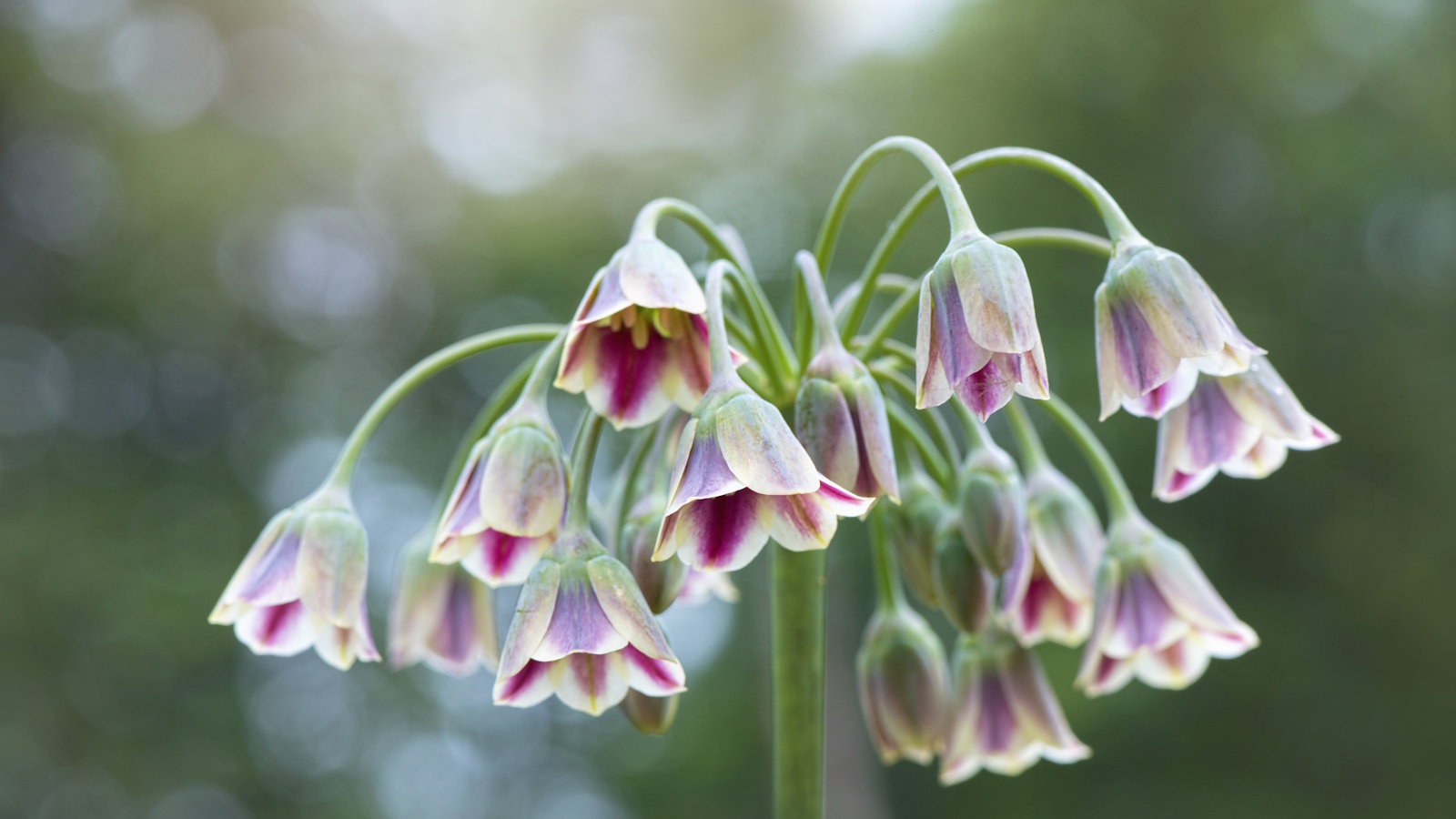
While we might all aspire to create prolific planters full of flowering bulbs in the springtime, choosing the wrong bulb species for your container displays can cause more harm than good.
When selecting bulbs for pots, it's important to consider which species to avoid, whether for their size or ability to spread. For example, planting bulbs that will grow to four or five feet tall can easily result in small pots becoming top-heavy. In addition, growing vigorous, spreading or invasive bulbs that can escape from containers into the yard will have long-term consequences, with borders full of unwanted bulbs that are hard to eliminate.
As a former professional gardener, I have planted thousands of bulbs over my career in both the UK and Italy. While the list of bulbs to avoid is small when compared to the list of what can be grown, doing your research before ordering and planting will prevent problems further down the road. Here, I share all I know about bulb planting mistakes and species to keep out of your yard.

6 bulbs to never plant in pots
Wherever you live and whatever your US hardiness zone, fall and winter are typically the time to plan and plant spring flowering bulbs. While those warm May and June days might seem far away, spending a small amount of time planting bulbs now will pay off when your yard is full of colorful and fragrant bulb displays next year. However, not all bulbs should be grown in pots. The following list details those bulbs to never plant in pots, along with some recommendations for what you should grow.
1. Camassia

Camassia are high-impact bulbs best planted on mass to create a sea of tall, pyramidal-like blooms that emerge in late spring. I have grown and cared for meadows of naturalized camassia in South Wales, and while these flowering bulbs are both attractive and popular with pollinators, anyone who knows how to grow camassia will tell you that these bulbs need space to spread.
Native to the mountains of the Pacific Northwest, camassia is best suited to moist, open sites and does not respond well to being lifted or disturbed. In addition, it is best to leave the straggly foliage to turn yellow before cutting back to ensure that the bulb captures as much energy as possible before entering its dormant stage. This can be a problem when growing camassia in container displays, as you want to keep your pots looking green and full of life until the end of summer.
In my experience, these tall perennial bulbs are best kept out of containers and instead should be planted in open, moist but well-draining meadow environments.
2. Giant allium
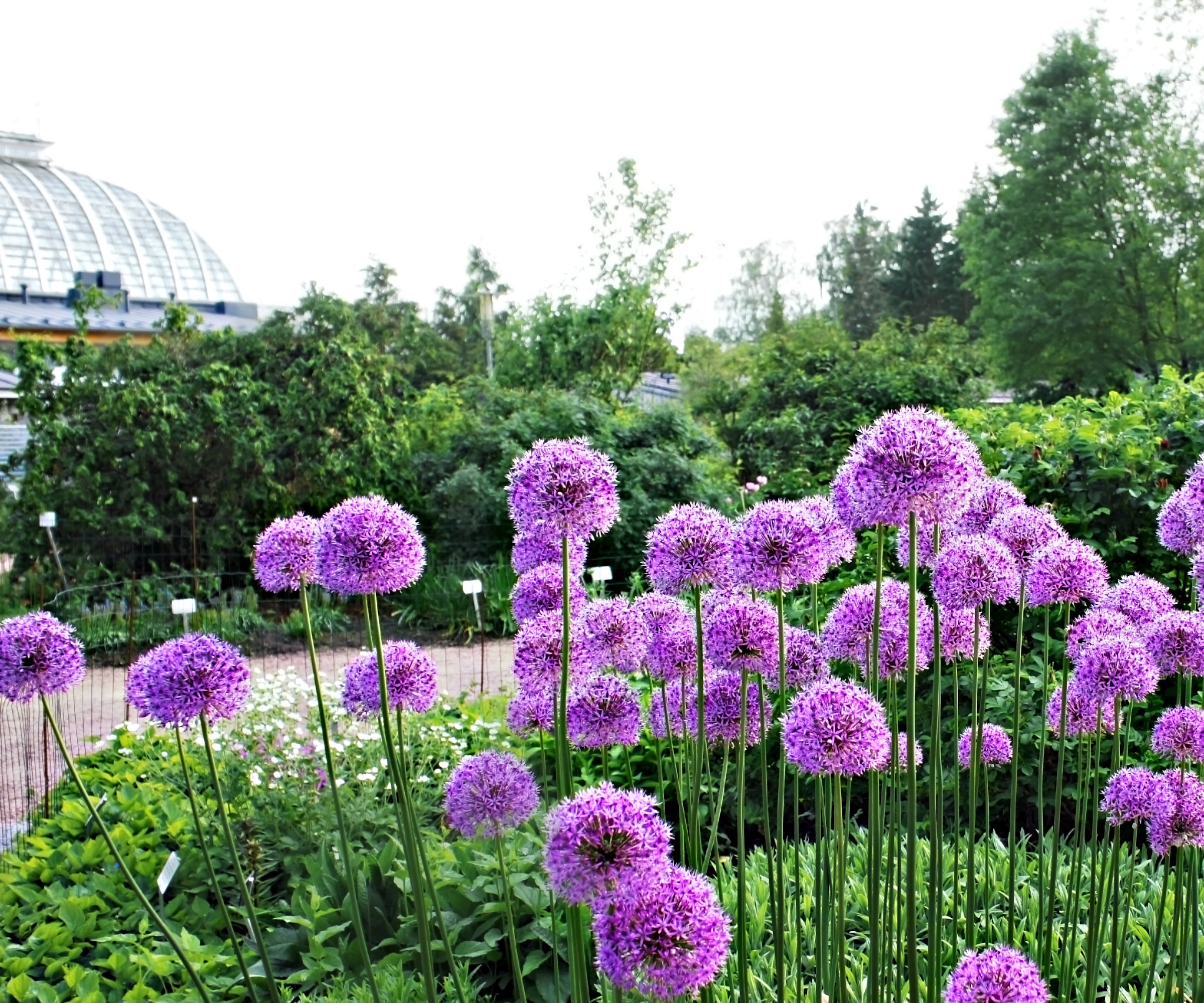
There are approximately 750 species belonging to the Allium genus, found growing across the Mediterranean, Middle East, Asia and North America. Among them are many vegetables and herbs, including onions (Allium cepa), garlic (Allium sativum) and chives (Allium schoenoprasum). There are also many ornamental species, sometimes referred to as ornamental onions, and it is these alliums that many of us grow in our garden borders and pots.
'There are so many varieties of allium bulbs to choose from when growing flowers in the yard,' says Drew Swainston, former professional gardener and gardens content editor at Homes & Gardens. 'From dwarf varieties that reach no taller than eight inches, to large species that tower above five feet, alliums can be found in all manner of shapes, sizes and colors.
'One species to avoid when container growing,' Drew continues, 'is Allium giganteum, commonly referred to as the giant allium. This species can grow up to and above four feet, so unless you have a very large pot, it is best to keep this species in the ground and out of your containers.'
As Drew says, planting tall perennial flowers, like the giant allium, is not recommended when growing in pots, often resulting in top-heavy containers that can topple over in the wind or rain.
Instead, select a shorter variety, such as Allium 'Millennium' which grows no bigger than one to two feet tall, or try golden garlic, Allium moly, with sunshine-yellow blooms that grow up to 10 inches in height. Golden garlic bulbs are available from Amazon.
Allium 'Millennium' is one of the shorter varieties of allium, reaching around 1.5 feet tall. With vibrant blooms, this purple variety is perfect for pot growing.
3. Sicilian honey garlic
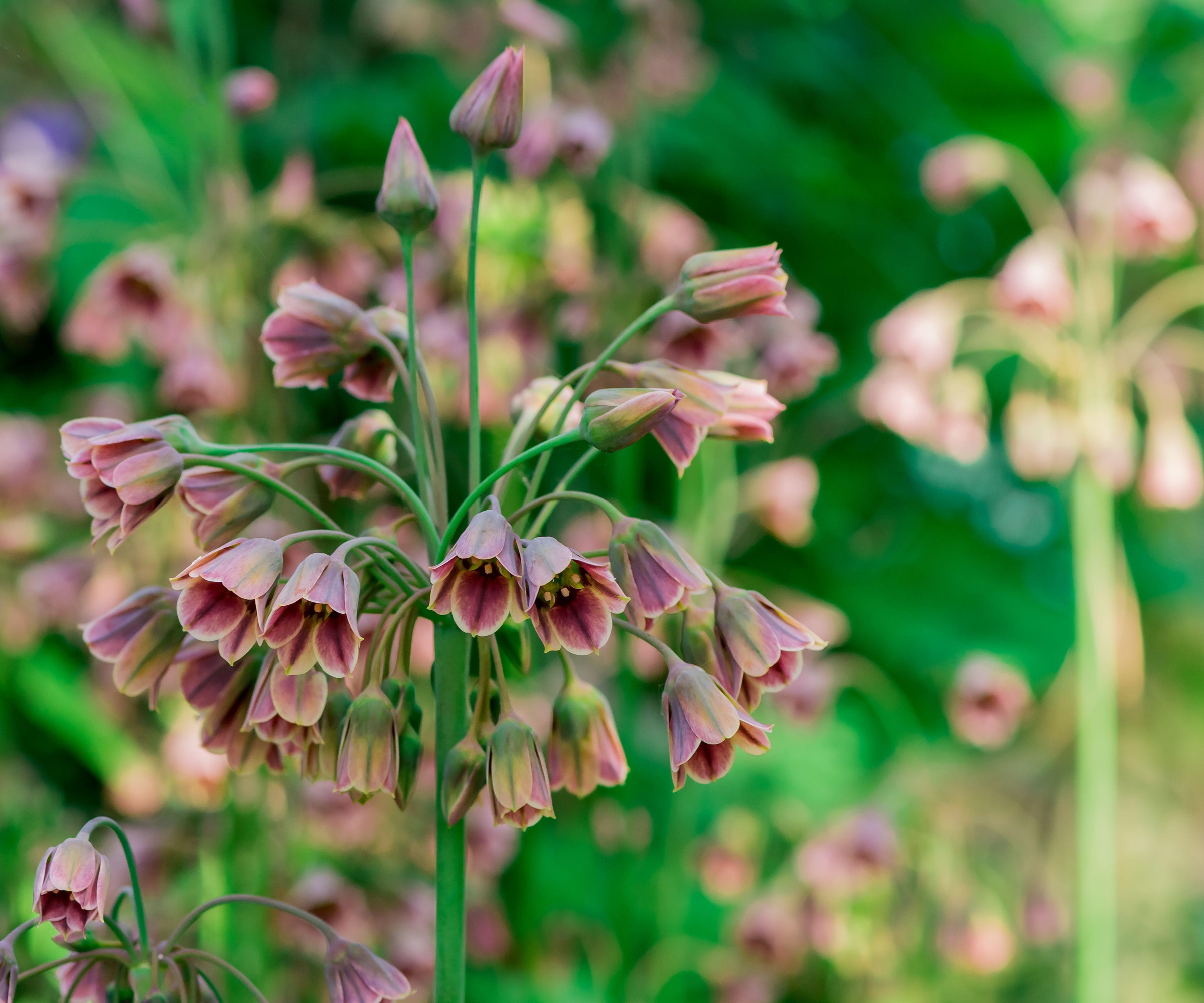
Sicilian honey garlic, or Allium siculum (syn. Nectaroscordum siculum) is a favorite bulb of many gardeners. Considered one of the best bulbs for naturalizing meadows or large borders, this tall perennial bulb has dramatic flowerheads with masses of hanging bell-like striped blooms.
Native to mountainous regions around the Aegean, Black and Mediterranean seas, Sicilian honey garlic thrives in warm regions, and can be grown from US hardiness zone 5 plus.
While this unusual spring flowering plant is undeniably attractive, it tends to self-seed freely and, over time, a handful of bulbs can develop into expansive colonies in meadows, borders and lawns. While this vigorous nature can be attractive if you have plenty of space, in smaller yards it can quickly take over. Even if you want to restrict this species to pots and containers, it will eventually find its way into your borders.
Instead of growing Sicilian honey garlic in pots, opt for one of the best miniature bulb varieties, such as these 'Valerie Finnis' grape hyacinth bulbs, available from Amazon, with small but impressive pale-blue flowers.
4. Star of Bethlehem
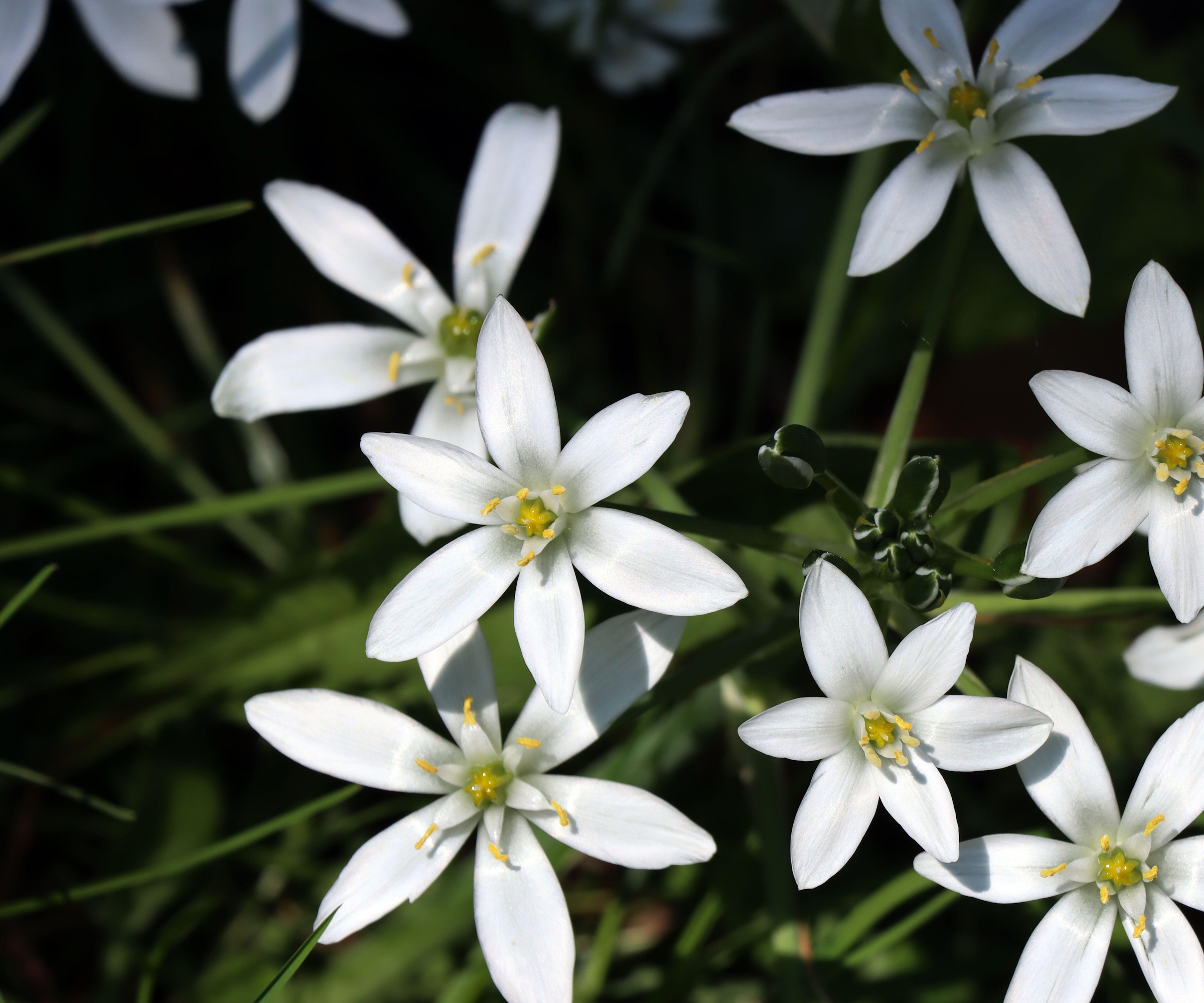
It is hard for me to add this next species to the list of bulbs never to plant in pots. When working as a gardener at a private Tuscan estate, there was a rolling woodland beyond the garden gate where I would often walk. The Star of Bethlehem, or Ornithogalum umbellatum, would carpet the forest floor in spring, with delicate white blooms contrasting so perfectly against the green backdrop.
However, much the same as Sicilian honey garlic above, this spring bulb is vigorous and considered an invasive plant in many US states. Once established, Star of Bethlehem bulbs can readily spread across backyard borders and beds, outcompeting many woodland native plants.
For this reason, the Star of Bethlehem is classified as invasive in Wisconsin, Tennessee, Virginia, Kentucky, Maryland and Pennsylvania. Avoid planting this bulb in your pot displays, as it will eventually find its way into your garden beds or the wider landscape, and in mild regions, can quickly become a problem.
5. Imperial fritillary
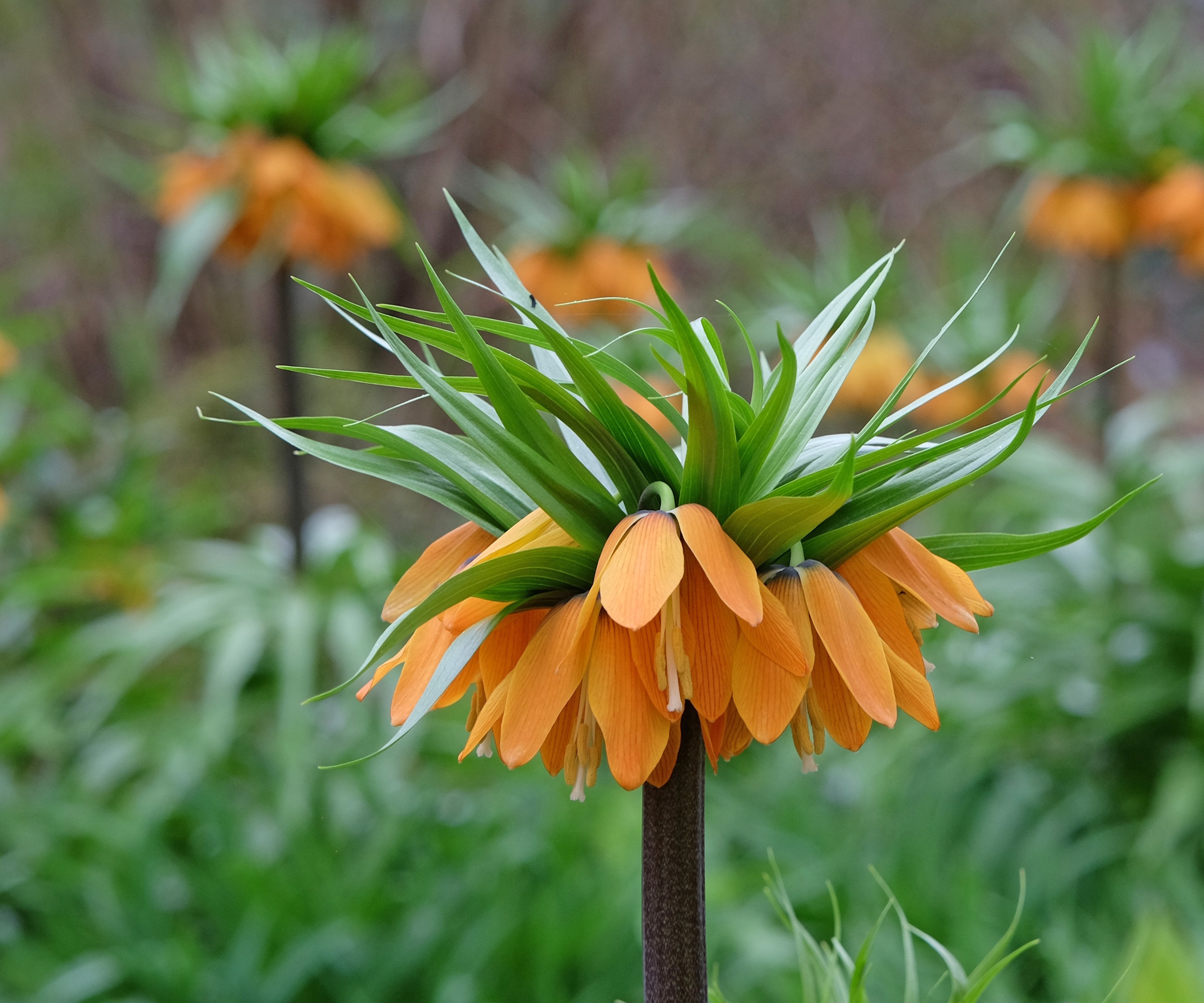
'Fritillaries are unique, elegant flowers that add striking visual interest to garden beds and borders,' says Reese Robbins, garden expert and creator of Just Pure Gardening. 'Their distinctive blooms, often bell-shaped, come in a variety of colors, from deep purples and reds to creamy whites. It is impossible, I think, not to be captivated by these unusual bulbs.'
One showstopping species is Fritillaria imperialis, commonly known as the crown imperial or imperial fritillary. While colorful and grand, as can be seen in the image above, unless you have a very large container, I would add this to your list of bulbs to never plant in pots.
The bulbs of Fritillaria imperialis can be similar to the size of a fist, often two to four inches in diameter, and they will eventually grow to reach four or five feet in height. While this can look impressive in large pots, I would caution against planting this species in smaller terracotta pots that would easily topple over.
Finally, this species of fritillary also has a peculiar, pungent smell. Often described as having a skunk-like odor, this plant is perhaps better suited to the back of the garden border as opposed to a pot by the back door.
Instead, when seeking fritillary spring flowers for pots, Reese suggests growing Fritillaria meleagris, also known as the snake’s head fritillary. 'With checkered blooms in shades of purple and white, this shorter species works well in containers, allowing you to enjoy unique flowers on patios or terraces.'
With checkered flowers reaching no taller than 7-10 inches, you won't regret adding this spring bulb to your collection.
6. Spanish bluebells
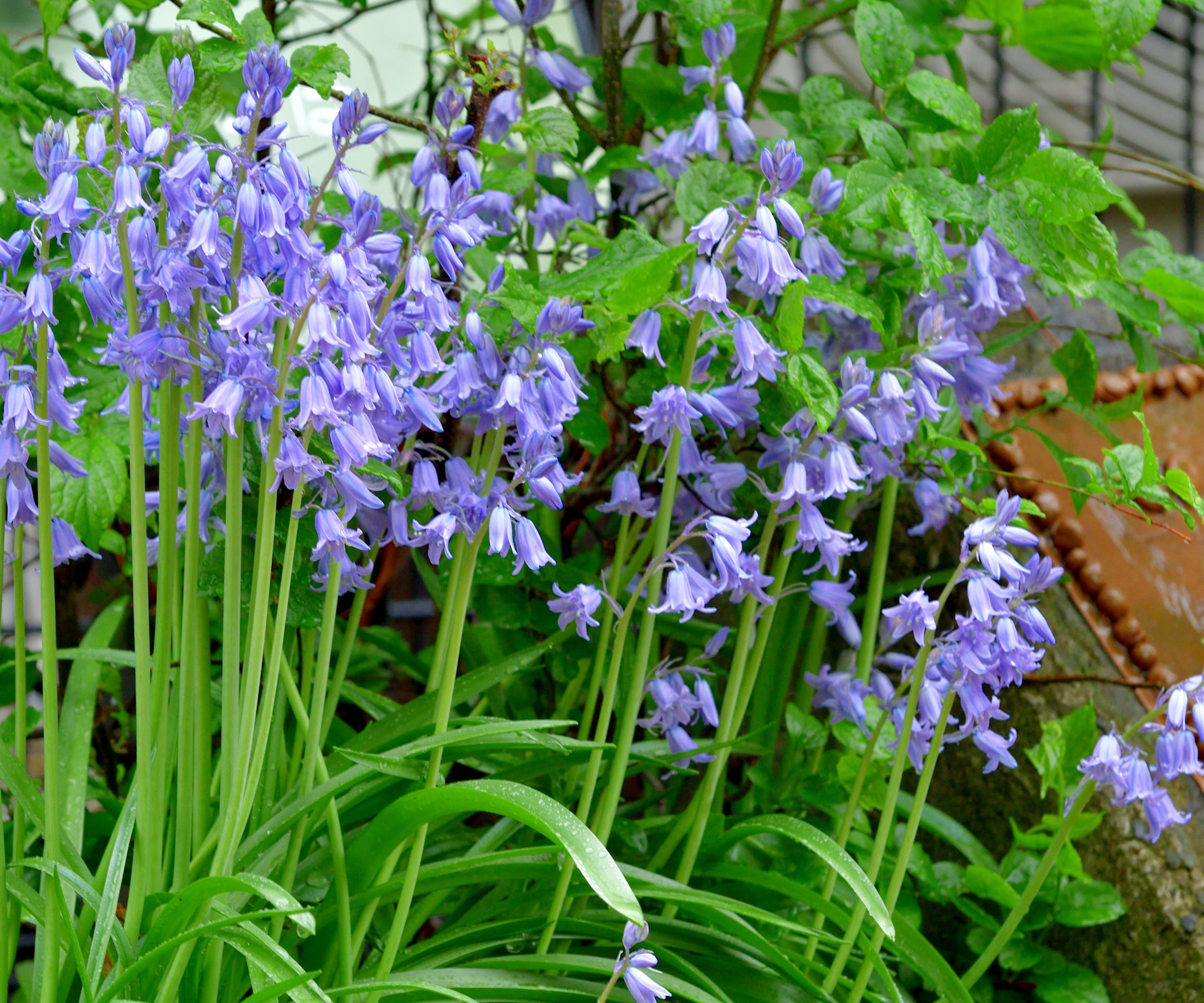
Whether you garden in the UK, US or elsewhere in the world, the Spanish bluebell, Hyacinthoides hispanica, is a vigorous, bulbous perennial to avoid growing. While the lilac or blue flowers are attractive when seen carpeting a woodland or forest floor, this species is incredibly invasive.
While you might think you can contain the spread of Spanish bluebells if grown in a pot, this plant will find a way to escape and begin sprouting all over your yard. My advice: do not accept any bluebell bulbs or lifted clumps from friends or relatives unless you know exactly what species you are dealing with.
Instead, consider adding a different bulbous species that is not as vigorous but no less beautiful. For example, if you are a fan of white flowers, why not consider adding some of the best snowdrops to your borders? Common snowdrops, or Galanthus nivalis, bulbs are available to order from Amazon.
FAQs
What bulbs are best suited to growing in pots?
The list of bulbs suited to growing in pots is markedly longer than this list of plants to avoid growing. All of the classic bulbs tend to be well suited to container culture, including daffodils, hyacinths and dwarf irises. Perhaps the most popular and impactful bulb suited to pot growing would be tulips. With so many tulip types available, from species tulips to fringed tulip varieties, you will find a color and form suited to your tastes. Purple flowering tulip bulbs can be ordered online from Walmart.
Whatever spring and summer blooms you choose to grow in your pots, be sure to store bulbs correctly before planting. Inspect your bulbs when they arrive, checking for signs of mold or rot, before storing them in a cool, dry and pest-free environment. I once lost hundreds of tulip bulbs to hungry mice over a single weekend, so caution and vigilance will help to save your bulbs from the same fate.







